Anemia in pregnancy: a systematic review and meta-analysis of prevalence, determinants, and health impacts in Egypt
- PMID: 39810098
- PMCID: PMC11731563
- DOI: 10.1186/s12884-024-07111-9
Anemia in pregnancy: a systematic review and meta-analysis of prevalence, determinants, and health impacts in Egypt
Abstract
Background: The WHO considers anemia in pregnancy a severe public health issue when prevalence surpasses 40%. In response, we conducted a systematic review and meta-analysis to examine anemia among pregnant women in Egypt, focusing on its prevalence, determinants, and associated complications.
Methods: We conducted a systematic literature search for studies published between January 1, 2010, and August 18, 2024, to identify studies from Egypt reporting on anemia in pregnant women, including its prevalence, associated determinants, and complications. A meta-analysis was conducted using a random-effects model to estimate pooled prevalence, odds ratios (OR), and standardized mean differences (SMD). Sensitivity analyses and publication bias were performed. All statistical analyses were conducted using R software.
Results: Eighteen studies met the eligibility criteria with a total sample size of 14,548. The overall prevalence of anemia among pregnant women was 49% (95% CI: 42-57), with no significant difference between Upper and Lower Egypt (P = 0.66). The sensitivity analysis demonstrated the absence of influential outliers and Egger's test indicated no evidence of publication bias (P = 0.17). Anemia prevalence was significantly higher in the third trimester (65%) compared to the second trimester (47%) (P = 0.03). Among anemic pregnant women, most cases were mild (47%) and moderate (47%). The determinants of anemia among pregnant women included being over 30 years old (OR: 1.95), residing in rural areas (OR: 1.76), illiteracy (OR: 1.93), birth spacing < 2 years (OR: 2.04), lack of iron supplementation (OR: 2.59), presence of intestinal parasites (OR: 1.38), antenatal visits < 5 (OR: 5.27), multiparity, and low income, all with statistical significance (p < 0.05). Regarding dietary determinants, a low intake of meat, vegetables, fruits, and high tea consumption was consistently associated with a higher risk of anemia. For neonatal complications, infants born to anemic mothers had significantly lower Apgar scores, gestational ages, and birth weights (P < 0.05), with birth weight being the most adversely impacted (SMD = -1.3).
Conclusions: This meta-analysis shows 49% anemia prevalence in pregnant Egyptian women, indicating severe health concern. The findings highlight the urgent need for targeted interventions aimed at addressing the key determinants identified in this study.
Keywords: Anemia; Apgar; Complications; Determinants; Egypt; Meta-analysis; Pregnancy.
© 2024. The Author(s).
Conflict of interest statement
Declarations. Ethics approval and consent to participate: Not applicable. Consent for publication: Not applicable. Competing interests: The authors declare no competing interests.
Figures
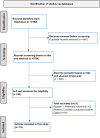


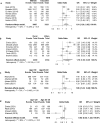
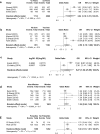
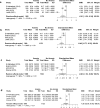
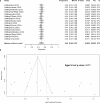
Similar articles
-
Folic acid supplementation and malaria susceptibility and severity among people taking antifolate antimalarial drugs in endemic areas.Cochrane Database Syst Rev. 2022 Feb 1;2(2022):CD014217. doi: 10.1002/14651858.CD014217. Cochrane Database Syst Rev. 2022. PMID: 36321557 Free PMC article.
-
Prevalence and determinants of anemia during the third trimester of pregnancy.Clin Nutr ESPEN. 2021 Aug;44:194-199. doi: 10.1016/j.clnesp.2021.06.023. Epub 2021 Jul 2. Clin Nutr ESPEN. 2021. PMID: 34330465
-
Prevalence of anemia and associated factors among pregnant women at Hargeisa Group Hospital, Somaliland.BMC Pregnancy Childbirth. 2024 May 9;24(1):332. doi: 10.1186/s12884-024-06539-3. BMC Pregnancy Childbirth. 2024. PMID: 38724919 Free PMC article.
-
Adherence to iron-folic acid supplementation among pregnant women in Ethiopia: a systematic review and meta-analysis.BMC Pregnancy Childbirth. 2020 Mar 4;20(1):138. doi: 10.1186/s12884-020-2835-0. BMC Pregnancy Childbirth. 2020. PMID: 32131751 Free PMC article.
-
Prevalence and determinants of anemia among pregnant women attending maternal and child health clinics at Sukuta Health Center, The Gambia: An institutional-based cross-sectional study.Womens Health (Lond). 2025 Jan-Dec;21:17455057251338380. doi: 10.1177/17455057251338380. Epub 2025 May 14. Womens Health (Lond). 2025. PMID: 40367293 Free PMC article.
Cited by
-
Do dietary habits and iron-folic acid intake make a difference? Factors associated with anemia in pregnancy: a multi-center cross-sectional study.Front Glob Womens Health. 2025 Jun 30;6:1599842. doi: 10.3389/fgwh.2025.1599842. eCollection 2025. Front Glob Womens Health. 2025. PMID: 40662142 Free PMC article.
References
-
- Karami M, Chaleshgar M, Salari N, Akbari H, Mohammadi M. Global prevalence of Anemia in pregnant women: a comprehensive systematic review and Meta-analysis. Matern Child Health J. 2022;26:1473–87. - PubMed
-
- Anaemia. https://www.who.int/news-room/fact-sheets/detail/anaemia. Accessed 14 Oct 2024.
-
- Black RE, Victora CG, Walker SP, Bhutta ZA, Christian P, De Onis M, et al. Maternal and child undernutrition and overweight in low-income and middle-income countries. Lancet. 2013;382:427–51. - PubMed
-
- WHO. Anaemia. 2008. https://www.who.int/data/nutrition/nlis/info/anaemia. Accessed 30 May 2024.
-
- Bánhidy F, Ács N, Puhó EH, Czeizel AE. Iron deficiency anemia: pregnancy outcomes with or without iron supplementation. Nutrition. 2011;27:65–72. - PubMed
Publication types
MeSH terms
LinkOut - more resources
Full Text Sources
Medical
Miscellaneous

